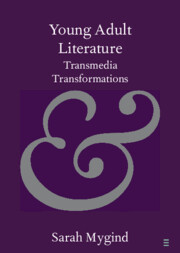Element contents
Young Adult Literature
Published online by Cambridge University Press: 24 November 2023
Summary
- Type
- Element
- Information
- Online ISBN: 9781108567145Publisher: Cambridge University PressPrint publication: 21 December 2023
Bibliography
- 4
- Cited by



